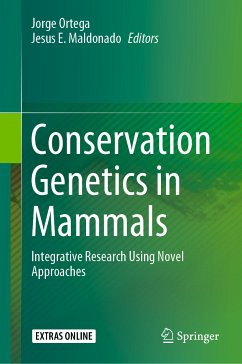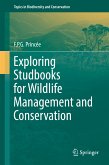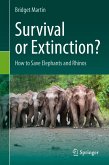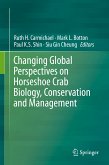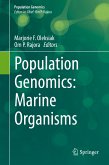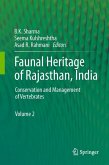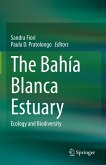Jorge Ortega obtained his doctorate on behavioral ecology under Hector Arita. He later pursued postdoctoral studies at the Smithsonian Institute, where he gained expertise in molecular biology. Currently he is developing projects on eco-immune genetics and genetic conservation of wildlife such as bats, whales and black bears. He is a member of the Board of Directors of the North American Society of Bat Research, of the North American Bat Alliance, and of the IUCN Bat Specialist Group, the Society for the Study of Evolution and the American Society of Mammalogists. Jesus Maldonado obtained his Ph.D. degree in Organismic Biology, Ecology and Evolution at the University of California Los Angeles. He then joined the Smithsonian Conservation Biology Institute where he has been a Research Geneticist at the Center for Conservation Genomics since 1998. His research applies molecular genetics tools to answer basic and applied questions in conservation and evolutionary biology in mammals. Much of his research involves assessment of genetic variation within and among populations and species to document levels of inbreeding and determine units of evolutionary, taxonomic and conservation significance. He developed a research program that follows an academic model, and most of his projects over the past several years are based on collaborations established with students, postdoctoral fellows and research scientists/curators at the Smithsonian and other academic institutions and conservation communities in Latin American, India, South East Asia and Africa. This allowed him to build a strong conservation genomics program that is international in scope. Beyond theoretical aspects of his research, outcomes from many studies have direct applications to helping address critical conservation issues in a variety of threatened and endangered mammals. He is also interested in studying micro-evolutionary processes that shape genetic variation and evolutionary trajectories, as well as landscape genetics and genomics. During the past 19 years, he has developed and utilized non-invasive genetic techniques and ancient DNA technologies for obtaining reliable information to study many elusive endangered mammal species. Maldonado has over 100 peer reviewed publications in scientific journals including Science, Molecular Ecology, PLoS ONE, Molecular Phylogenetics and Evolution, Proceedings Royal Society B and has served in the editorial board of several journals including the Journal of Mammalogy, Conservation Genetics, PLos ONE and Therya.
(1) Introduction on different applications of molecular tools to answer novel questions in the field of population genetics/genomics of endangered mammals (Mike Bruford, School of Biosciences, Cardiff University, UK).- (2) Climate change impact at the genetic level: patterns in the Couesi's rice rat Oryzomys couesi (Ella Vázquez Domínguez, Instituto de Ecología, UNAM, Mexico).- (3) Use of molecular and demographic data to prioritize populations of black-tailed prairie dogs (Cynomys ludovicianus) from Chihuahua, Mexico for conservation (Luis Eguiarte Fruns, Instituto de Ecología, UNAM, Mexico).- (4) Anthropogenic and Historic Movements of American Black Bears Shape Contemporary Population Structure (Emily Puckett, Division of Molecular Sciences, University of Missouri, USA).- (5) How many ESUs are of conservation interest within some species of Neotropical carnivores (Felidae, Canidae, Ursidae, Mustelidae and Procyonidae)? : Individual mitocondrial genes versus mitogenomics (ManuelRuiz García, Departamento de Biología, Pontificia Universidad Javeriana, Spain).- (6) Phylogeographic footprint of armadillo colonization in North America (María Clara Arteaga,Departamento de Biología de la Conservación, Mexico).- (7) Koala conservation in Queensland: a role for a living genome bank in genetic rescue? (Jenny Seddon, School of Veterinary Science, The University of Queensland, Australia).- (8) Noninvasive genetics sheds light on the status, phylogeography, and evolution of the most elusive carnivores: The case of the snow leopard (Jan Janecka, Department of Biological Sciences, Duquesne University, USA).- (9) Documenting genetic diversity in changing populations for management and conservation (Jennifer Leonard, Conservation and Evolutionary Genetics, Estación Biológica de Doñana, Spain).- (10) Conservation genetic of gray brocket deer (Mazama gouazoubira) in the southern of the distribution range (Susana González, Departamento de Biodiversidad y Genética, Universidad de Uruguay).- (11) Noninvasive Genetic Monitoring of the Elusive European Wildcat as a Tool for Science-Based Wildlife Conservation (Katharina Steyer, Seckenberg Research Institute, Germany).- (12) Conservation genetics in bats: current progress and future prospects (Serena Dool, University of Greifswald, Germany).- (13) From dung to demography: Using noninvasive methods to study elephants inside and outside protected areas (Lori Eggert, Division of Biological Sciences, University of Missouri, USA).- (14) Effect of the habitat connectivity in the genetic variability of the Volcano rabbit (Romerolagus diazi) (Jorge Ortega/Leslie Montes/José Antonio Guerrero, Escuela Nacional de Ciencias Biológicas, Instituto Politécnico Nacional).- (15) Different immune system diversity for city life: comparing major histocompatiblity complex alleles in San Joaquin kit fox (Vulpes macrotis mutica) (Jesus Maldonado/Tammy R Wilbert, Masoumeh Sikaroodi, Brian Cypher, Christine Van Horn Job, Katherine Ralls, and Patrick M. Gillevet, Center for Conservation Genomics, Smithsonian Institue, Washington, DC, USA).- (16) Conclusion: current state and future prospects of conservation genomics in mammals (Jorge Ortega, Jesus Maldonado).

